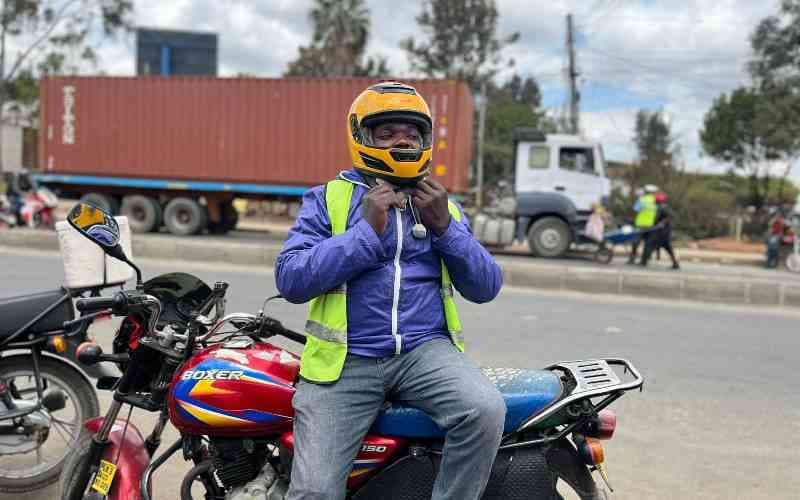Loading News Article...
We're loading the full news article for you. This includes the article content, images, author information, and related articles.
We're loading the full news article for you. This includes the article content, images, author information, and related articles.
Recent surveys reveal a resilient yet pressured populace, with a vast majority turning to secondary income streams and reducing non-essential costs to navigate persistent economic headwinds.

Despite official projections of economic growth, a significant portion of Kenyans remain pessimistic about the country's financial trajectory, citing the high cost of living, unemployment, and rising taxation as primary concerns. A September 2025 poll by research firm Infotrak found that 57% of Kenyans feel the country is on the wrong economic track. This sentiment is echoed by a NielsenIQ report from August 2025, which revealed that 91% of Kenyans feel constrained by recessionary pressures, with 63% expecting the downturn to last another year. Key worries include rising food prices, economic slowdown, and job insecurity.
The Kenya National Bureau of Statistics (KNBS) 2025 Economic Survey, released in May, provides context for this public sentiment. While Kenya's real Gross Domestic Product (GDP) grew, the pace slowed to 4.7% in 2024 from 5.7% in 2023. The survey also highlighted a critical employment trend: of the 782,300 new jobs created in 2024, a staggering 90% were in the informal sector, indicating a lack of stable, formal employment opportunities.
To cope with the financial strain, a growing number of Kenyans, particularly the youth, are turning to supplemental income sources. A GeoPoll survey published in January 2025 found that 71% of employed Kenyan youth have side hustles to augment their primary income. This trend is not limited to the young; a March 2025 survey by fintech company Tala noted that more salaried Kenyans across the board are taking on side businesses as economic pressures mount. The Tala report also found that half of its survey respondents were taking on more loans than the previous year specifically to fund these secondary income streams.
This entrepreneurial drive is born from necessity. The GeoPoll survey revealed that a majority of employed youth earn less than KSh 30,000 per month, pushing them to seek creative ways to make ends meet. The most popular sectors for these ventures are retail and trade, followed by agriculture and technology.
Beyond seeking extra income, Kenyans are fundamentally altering their household budgets. A TransUnion Africa consumer pulse study from the second quarter of 2025 showed that 61% of consumers had cut back on discretionary spending, with 55% planning further reductions. Similarly, the Tala MoneyMarch 2025 survey found that nearly three-quarters of respondents were choosing to cut back on non-essentials.
Household spending priorities have shifted towards essentials, with a NielsenIQ report from August 2025 identifying education, health and wellness, and childcare as the top concerns. At the same time, borrowing has become a key survival tool. The Tala survey indicated that about a third of respondents have been borrowing more since the start of the year to cover daily expenses like school fees and food. This points to a heavy reliance on digital lending platforms for liquidity to manage the rising cost of living.
Despite the challenges, a TransUnion report from Q2 2025 noted a surprising degree of optimism, with 84% of respondents feeling positive about their household finances over the next 12 months, even as 38% anticipated difficulty meeting their financial obligations. This resilience is further supported by the 2025 Economic Survey, which found that 33.3% of the population was able to manage financial risks in the past year, an increase from 23.3% in 2021.
These economic pressures are forging a new type of Kenyan consumer. Value for money is now a primary consideration, cited by 58% of Kenyans in the NielsenIQ study as a top factor in purchasing decisions. This is part of a broader trend identified by Kasi Insight in its March 2025 'State of the Consumer Report' as "Strategic Resilience," where consumers spend more intentionally. The report also highlights a growing focus on "Holistic Vitality," with consumers prioritizing mental and physical wellbeing, and "Eco-Powered Living," with 71% of consumers identifying as eco-friendly or socially responsible.
Digital adoption continues to accelerate these shifts. Mobile money is used by 96% of consumers, and social media has become a major channel for product discovery, influencing 70% of Gen Z shoppers. This evolving landscape requires businesses and policymakers to adapt to a populace that is financially constrained but also resilient, digitally savvy, and increasingly values-driven.
Keep the conversation in one place—threads here stay linked to the story and in the forums.
Other hot threads
E-sports and Gaming Community in Kenya
Active 6 months ago
Popular Recreational Activities Across Counties
Active 6 months ago
Investing in Youth Sports Development Programs
Active 6 months ago
The Role of Technology in Modern Agriculture (AgriTech)
Active 6 months ago